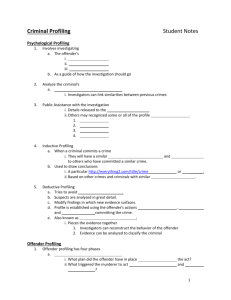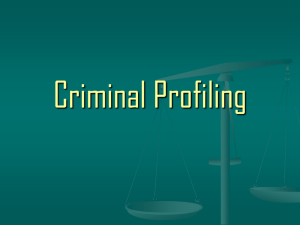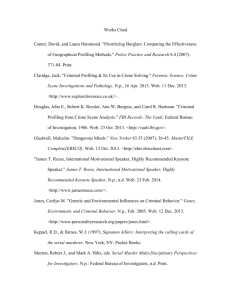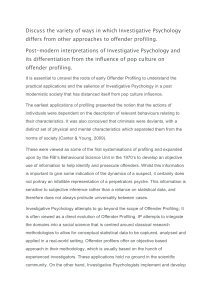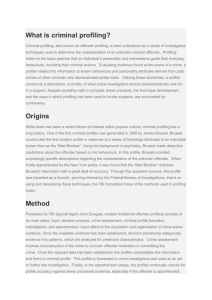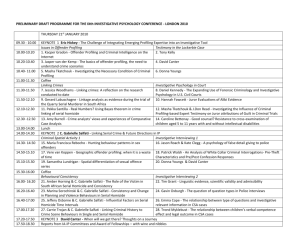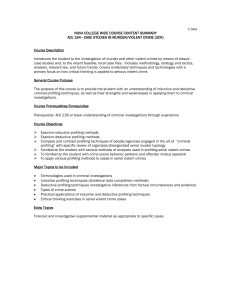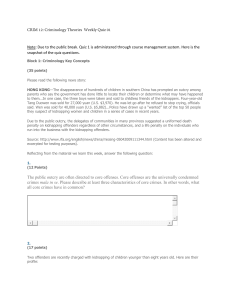Criminal Profiling: Teacher Notes on Psychological Methods
advertisement
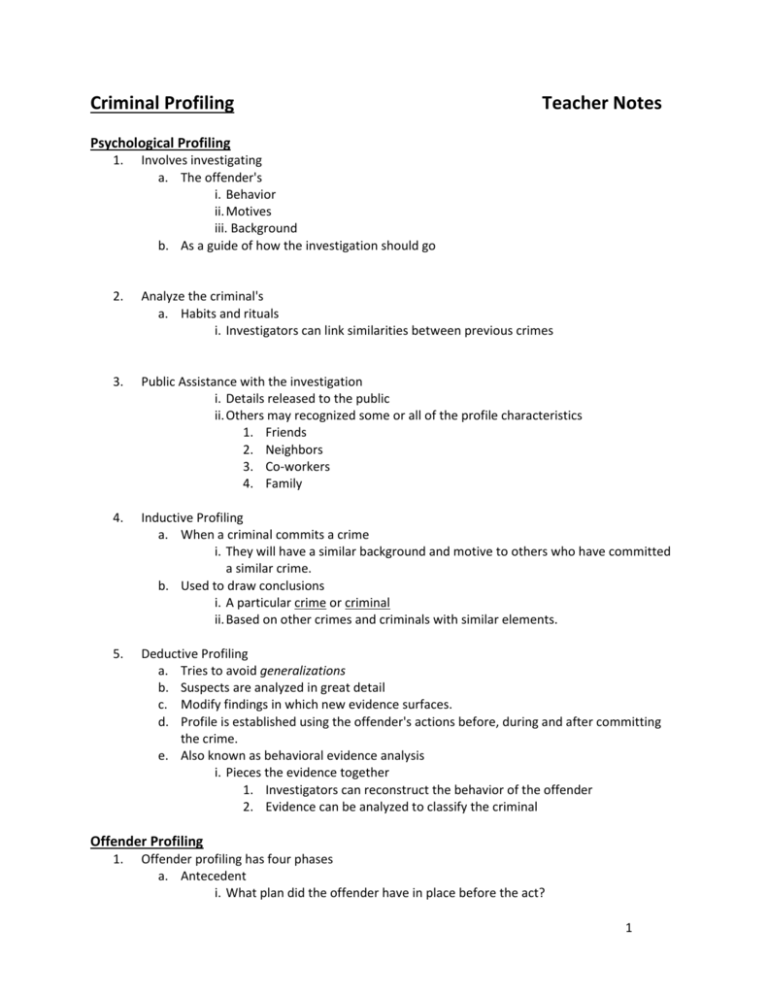
Criminal Profiling Teacher Notes Psychological Profiling 1. Involves investigating a. The offender's i. Behavior ii. Motives iii. Background b. As a guide of how the investigation should go 2. Analyze the criminal's a. Habits and rituals i. Investigators can link similarities between previous crimes 3. Public Assistance with the investigation i. Details released to the public ii. Others may recognized some or all of the profile characteristics 1. Friends 2. Neighbors 3. Co-workers 4. Family 4. Inductive Profiling a. When a criminal commits a crime i. They will have a similar background and motive to others who have committed a similar crime. b. Used to draw conclusions i. A particular crime or criminal ii. Based on other crimes and criminals with similar elements. 5. Deductive Profiling a. Tries to avoid generalizations b. Suspects are analyzed in great detail c. Modify findings in which new evidence surfaces. d. Profile is established using the offender's actions before, during and after committing the crime. e. Also known as behavioral evidence analysis i. Pieces the evidence together 1. Investigators can reconstruct the behavior of the offender 2. Evidence can be analyzed to classify the criminal Offender Profiling 1. Offender profiling has four phases a. Antecedent i. What plan did the offender have in place before the act? 1 ii. What triggered the murderer to act some days and not others? b. Method and manner i. What type of victim(s) did the murderer select? ii. What was the method and manner of murder? 1. Shooting 2. Stabbing 3. Strangulation 4. other c. Body disposal i. Did the crime and body disposal take place all at one scene? ii. Multiple scenes? d. Post-offense behavior i. Is the murderer trying to inject himself into the investigation? 1. Reacting to media reports 2. Contacting investigators 2
